Kevin Fehling gained three Michelin stars at La Belle Epqoue in Lubeck before moving to his own place in Hamburg, which opened in August 2015. The new restaurant is located in Hafencity, a district on two Elbe river islands that were formerly called Kehrwieder and Wandrahm. It is a former port area that is being redeveloped and an estate agent would perhaps describe as “up and coming”.
The dining room layout reminded me a little of Brooklyn Fare in New York. Seats are arrayed around a single, sinuous shaped custom-made table of dark cherry wood with no tablecloth. All twenty chairs point towards an open kitchen where the chefs work in the open – the “kitchen as temple” metaphor has rarely been expressed so literally. There are also a few additional seats on a balcony upstairs above the kitchen used for as a drinks area. The dining room is quite a striking space and has plenty of natural light. There are no waiters as such: the chefs deliver the dishes to the diners. There was some background music at a low volume, and WiFi available for anyone that wanted it.
There is no choice of dishes, just a tasting menu (€195) devised by the chef. Mr Fehling, who was born in 1977, had worked on a cruise liner MS Europa for four years before moving to La Belle Epoque in 2005. The Table has been very successful – quite apart from the chef retaining his three Michelin stars, I was unable to get a seat here on a Tuesday night when I was in the city some months ago, despite trying to book several months ahead. I liked the environment, as it is fun to see the chefs working, and they clearly are able to answer any food geek questions about the dishes they deliver better than a typical waiter.
The wine list had around 140 labels, with coverage of Germany and France but also further afield. For example, Erste Lage Grauburgunder Oberbergener Bassgeige 2014 was €40 for a bottle that you can find in the high street for around €17, Gaja Sito Moresco 2013 at €98 compared to a retail price of €40, and Roda Reserva 2005 at €150 for a wine that will set you back around €50 in a shop. There were also a few grander wines such as Chateau Rayas 2006 at a bargain €300 compared to its retail price of €355, and Gaja Sperss Langhe 2008 at €320 for a bottle whose current market price is €178.
A sequence of nibbles began the meal. A "fish sandwich" was really a savoury macaron with a filling of salmon and cucumber with a little dill. The texture was extremely delicate and there was just the right amount of dill to lift the salmon flavour without overwhelming it (18/20). This was followed by a beetroot tuile cylinder encasing veal tartare and a parsley garnish. This was another excellent nibble, the beetroot flavour subtle, the tuile ultra-thin and the tartare precisely seasoned (18//20). Asparagus espuma with pistachio cream and cherry chutney was an interesting combination, the acidity of the fruit working nicely with the cream (17/20). Soft shell crab was deep fried and accompanied by yoghurt espuma and couscous. The frying of the crab was impressive, completely avoiding the heavy, greasy batter that all too often afflicts soft shell crab in Chinese restaurants. This was more reminiscent of Japanese tempura skill levels, the yoghurt a good foil for the crab (18/20). The last of the nibbles was the best of the lot. A Thai steamed bread bun was topped with shrimp, pork belly, peanuts and coconut curry. The bun was as light and fluffy as you could wish, the subtle spices of the curry enhancing the natural sweetness of the shrimp, the pork belly an interesting contrast. The flavour balance was extremely precise here, and showed great skill (19/20).
A dish called "North Sea" reflects memories of the chef's upbringing by the coast. An array of shellfish was displayed including cockles, an oyster, some crab meat and a "mussel" that was really a black tuile shaped like a mussel shell containing mackerel tartare, served alongside citrus jelly and frozen dill dust, the latter presumably intended to represent the sand of a beach. Although this was not the first time this theme has been tackled (for example the "sounds of the sea" dish by Heston Blumenthal) it was certainly attractively presented, though there are limits to just how exciting cockles can be. The dill actually worked well and the citrus jelly brought useful acidity (17/20).
A dish familiar from the chef's La Belle Époque days was goose liver with strawberry jelly and woodruff, with rhubarb, goat milk and a strawberry tulle shaped like the table of the restaurant. I actually preferred the rendition here, the liver flavour deep and rich but beautifully balanced by the rhubarb and strawberry so that it was not too overpowering. This was terrific cooking (20/20).
Salmon from the Faroe Islands was next, served with a passion fruit Hollandaise, yuzu, miso pearls, shiso, pickled cucumber, radish and champonzu (a ponzu sauce made from soup and five Japanese fruits: yuzu, yuko, daidai, kabosu and sudachi). The dish was completed by a dashi stock poured at the table. I liked the accompaniments, the sourness of the pickled cucumber and the acidity of the fruits cutting through the inherent oiliness of the salmon to create another good flavour balance, though the taste of the farmed salmon itself was not particularly inspiring (16/20). I wonder what this would have tasted like with wild salmon, which sadly is getting rarer and harder to obtain these days.
Next was a large carabinero red prawn from the Mediterranean, served with tamarillo, avocado, salsa cream, coriander and a Mojito sauce. On the side was a little taco with Comte cheese, milk pearls, avocado and corn. The prawn was magnificent, precisely cooked and its natural sweetness beautifully complemented by the avocado and tangy sweetness of the tamarillo and the carefully controlled use of spices. The taco was also lovely, extremely delicate and with carefully balanced filling (19/20).
The main course was saddle of lamb (from France) with orange Hollandaise, anchovy paste, an "olive" filled with Brie de Meaux and rosemary flavoured jus. The meat had gorgeous flavour and was perfectly cooked, the mixture of quite bold flavours combining well. To complete the dish was a piece of focaccia topped with a spicy lamb sausage, The hint of spice was just what was needed to lift the flavour of the lamb with its cooking juices and avoid it being too rich, the anchovy adding a further contrast. This combination of ingredients sounds odd but they somehow worked together really well. The chef was really walking a tightrope here with these potentially clashing flavours but he clearly has a gift for judging flavour balance very precisely (19/20).
At this stage the dessert stage of the meal began, and as is the fashion these days in cutting.edge restaurants, overt sweetness is shunned in favour of partly savoury combinations. The first was an Indian influenced dish that would normally combine banana with pineapple, jasmine rice, curry and frozen sea buckthorn. I had actually asked for an alternative to banana and so the dish had Thai basil sherbet in place of banana sherbet. I have never been keen on savoury style desserts so find this kind of dish very hard to assess. It was clearly an expression of what the chef wanted to do, and certainly the technique involved in the various elements was fine - the texture of the sherbet was good etc. However was it something I really wanted to eat as a dessert? Not really.
The same theme continued with ice cream of miso and aubergine, with ginger, white chocolate, melon, calamansi, nori alga and matcha (green tea). Again the textures were as intended but I just didn't find it an appealing dish. This is a matter of personal taste so I find it tricky to really assign a score - the dish was pretty enough and did what it was intended to do, but I just find these flavours unappealing. A spring martini cocktail had elder blossom, rhubarb, honey ice cream and martini foam with grapefruit, which at least had some sweetness though for me the martini flavour rather dominated (15/20). Finally, a macaron of almond, chocolate, whisky and eucalyptus with lemon orange was something recognisable as a dessert, and very pleasant it was too (17/20). I understand that cooking has to evolve, and some chefs want to show how cutting edge they are by using unusual items in desserts, but with the no-choice tasting menu format it is rather irritating to encounter two pretty challenging desserts. Coffee was from a company called Haim.
The bill came to €300.50 (£236) with a bottle of lovely J.J. Prum Riesling Spatlese 2004 to drink. If you shared a modest bottle of wine then a typical cost per head would be around £185 all in. Service was charming, the staff friendly and knowledgeable, the sommelier/manager excellent. I preferred this meal to my previous experience of the chef's cooking when he was in Lubeck. The food is very elaborate, but the flavours are always well balanced, even when the components could easily jar if not so precisely judged. The technique of the kitchen was at all times impressive, with the best dishes being genuinely top drawer. I felt that there could be more consistency in the product sourcing - the lamb was excellent but the farmed salmon was very ordinary. I also wish I could end my meal with a proper French dessert, but that is just me. Certainly there were some fine dishes tonight, and the overall experience of dining here with the open kitchen environment was very enjoyable.


























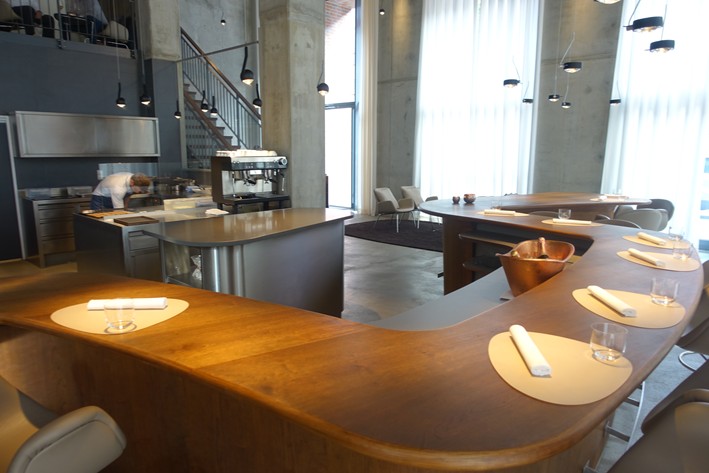
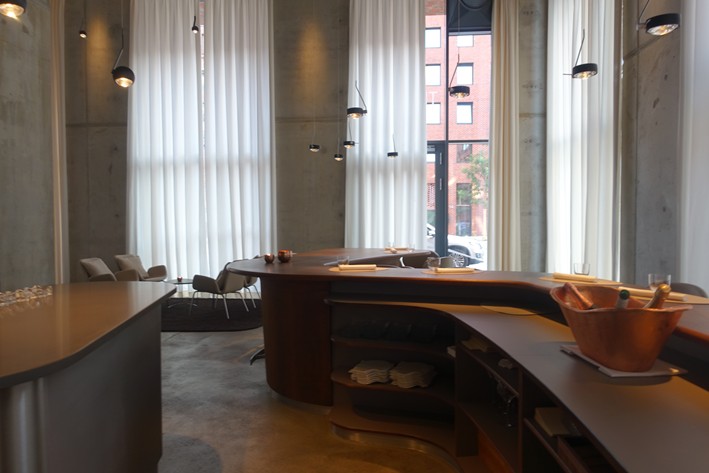

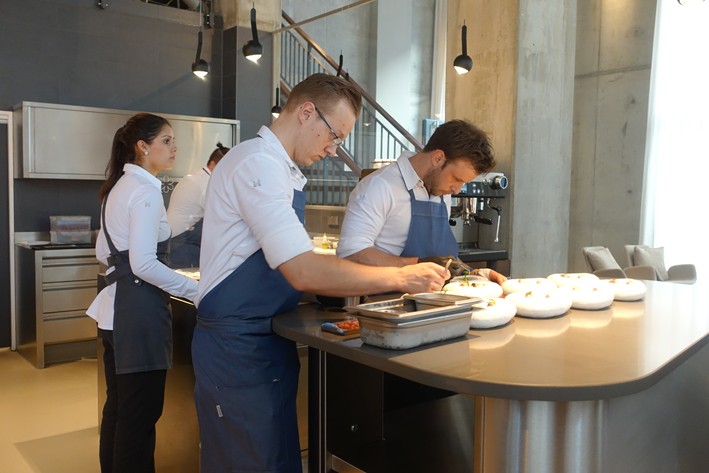



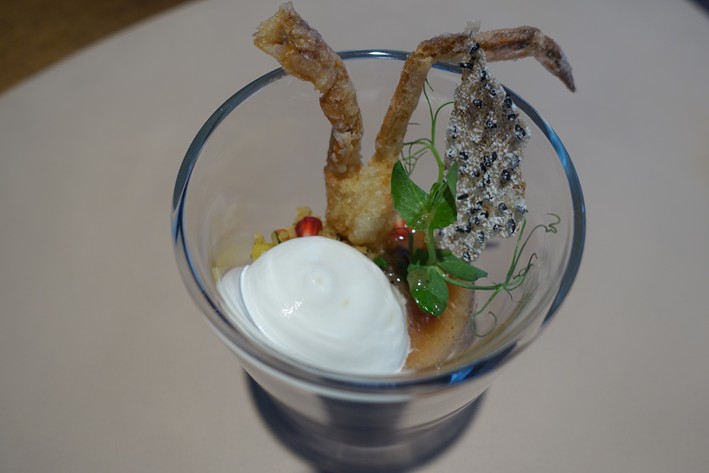
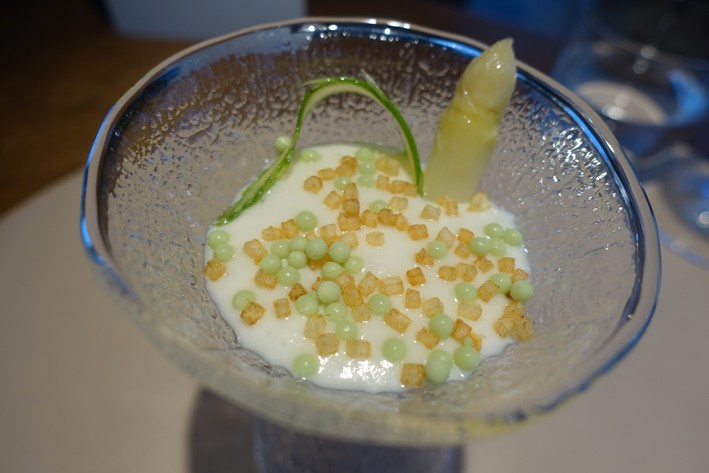

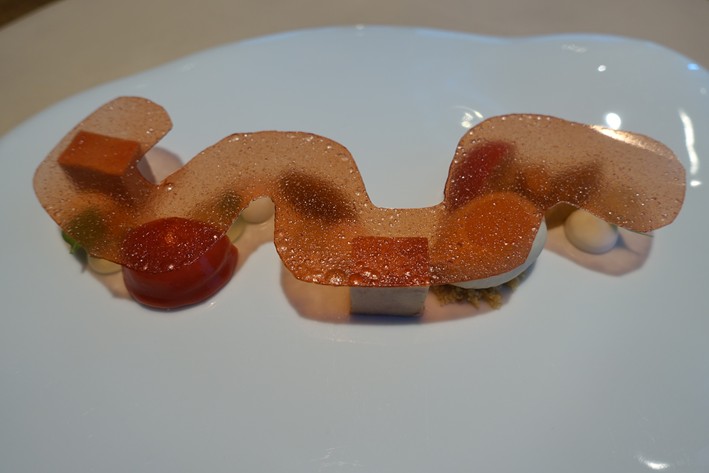

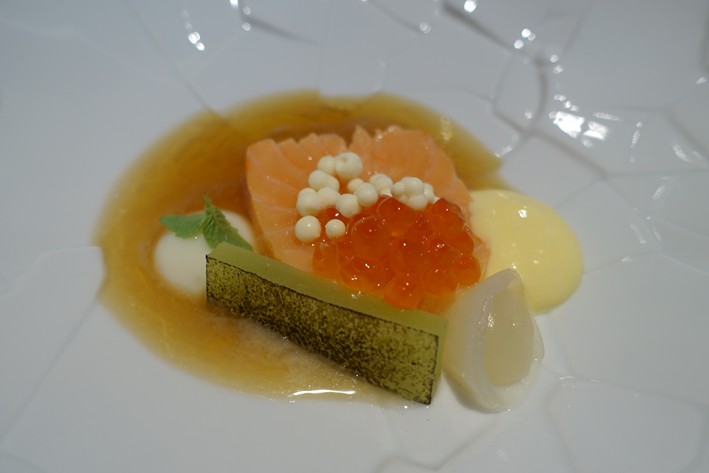

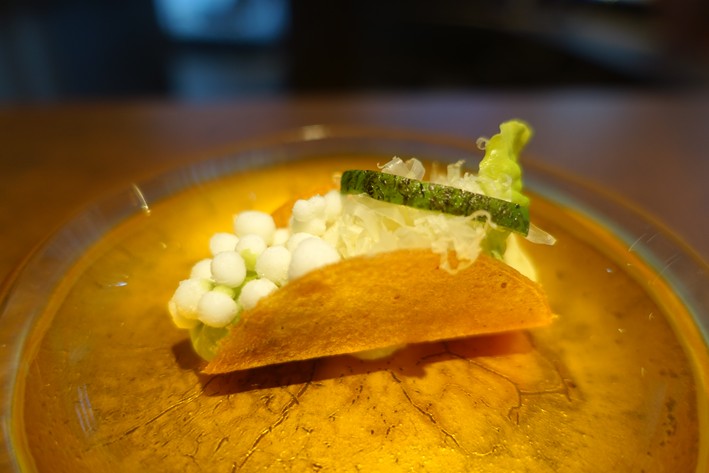
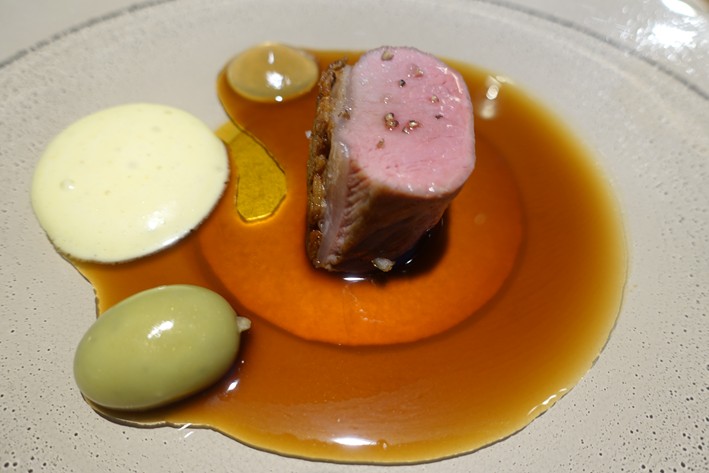


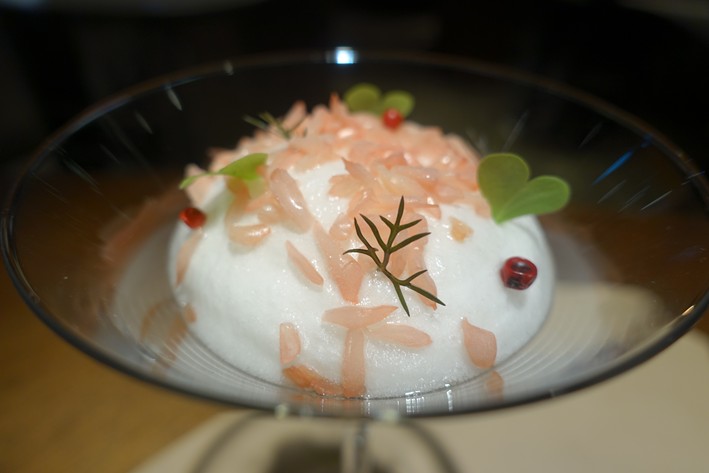
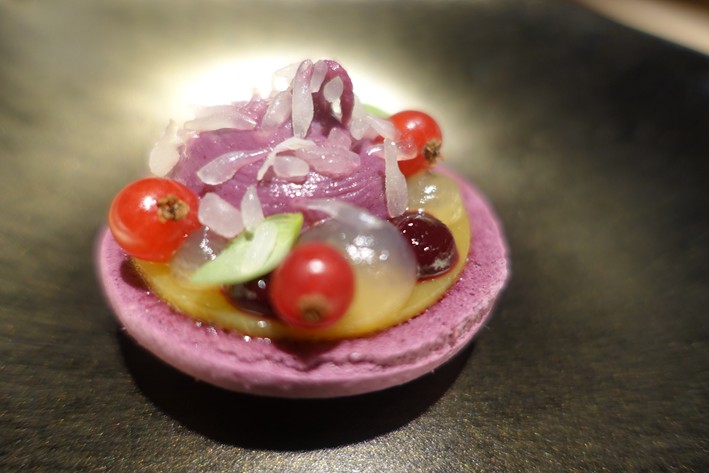
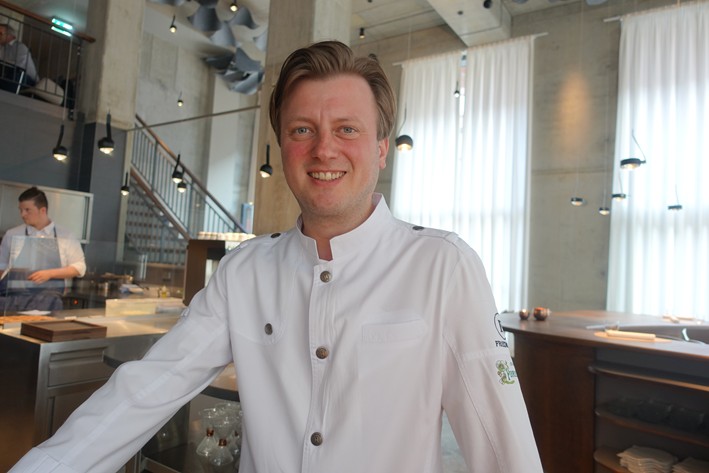

Add a comment
Thank you for submitting your comment, this will be checked and added to the website very soon.
User comments